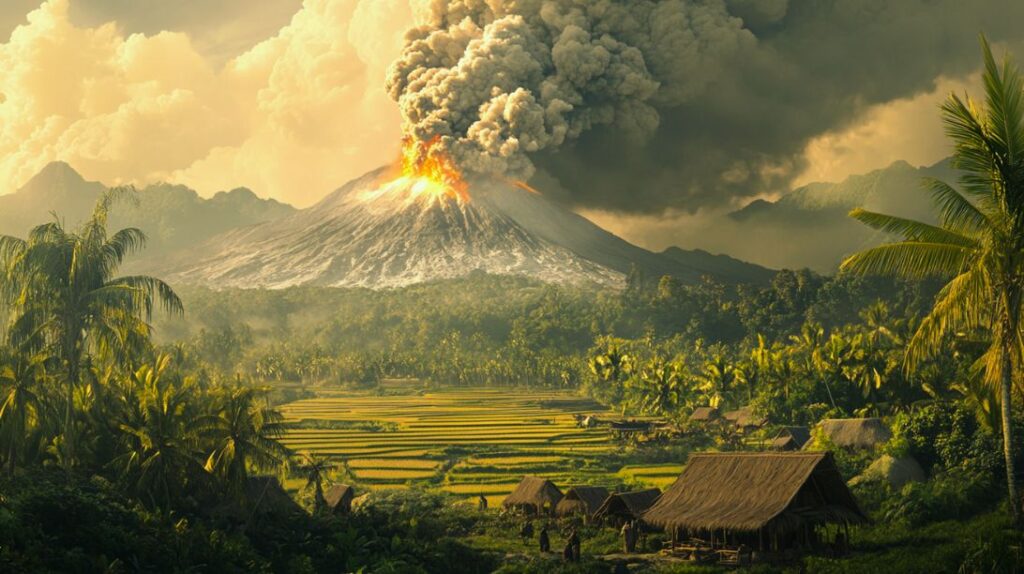Hi Everyone,
In researching my novel-in-progress, The Fair Incognito, I hit a snag: were my main characters, Jean-Jacques and Lucy Bakewell Audubon, merely two riches-to-rags n’er-do-wells as is often suggested who just couldn’t keep shop on the American frontier, resulting in a bankrupted Jean-Jacques having to sail downstream to New Orleans to create The Birds of America, one of the world’s most expensive books (£8.9m), or was it something else?
Might the use of tariffs have triggered the Audubon demise rather than his own buffoonery in running a local trading post? For a ruined man to end up on the Mississippi River looking for a way to make a buck, two uniting events needed to occur: 1) Napoleon’s costly wars, including a slave revolt in Haiti; and 2) Mt Tambora in Indonesia, the largest volcanic eruption in history, which lowered the earth’s temperature by five degrees.
When Bonaparte needed money, he trumped the Americans’ request to buy New Orleans by suggesting they purchase the entire Louisiana Territory, almost one million square miles. Those américains could not believe their dumb luck: the greatest sell in history, with payment in silver only coming due in December 1818 – fifteen years hence! That deal doubled the size of the USA, and when Britain barred trade with France and stole American seamen, America hit back. She closed her ports to the British, and turned from shipping to building factories, forges, canals and turnpikes. Goods moved to the western frontier, raw materials moved to the Atlantic seaboard, and back again. Who needed Britain?
America needed banks, cash and credit. The Second Bank of the United States (SBUS) now had land to sell, money to loan, local banks to hopefully regulate and of course those pesky 1818 bonds that would eventually come due. Local banks multiplied, needing, it appeared, nothing more than a printer, paper and ink.
Just about this time the largest volcanic blast in history erupted. For five days, columns of ash rose from Mt Tambora before collapsing into fiery flows that created tidal waves capable of snatching back islands and turning ships to stone. This sky-high dust started a journey that would shift weather conditions and ravage the world, not just in 1816, but in 1819 and beyond.
So what harm can volcanic ash do? It can create a year without a summer, a Europe with no harvest, a people without food: starvation. It can twist a British arm so that finally she lifts her tariffs. Yes, Britain would take all the grain America could muster. America woke up, sold grain to Britain, and became very rich indeed. And cotton? Yes, that too. Grain and cotton farmers became well heeled, especially in the USA, where the government tendered a great deal of land on easy terms: 25 per cent down and four years to pay.
Four years to pay? Why not start your own bank, print your own notes, even for the 25 per cent deposit?
Without those British tariffs, prosperity seeped into every crevice of American life. So much so that when cotton, grain and land prices were at their highest, in November 1818, Senator George Poindexter of Mississippi expressed his hope that slavery might one day be expelled from the Union – and no southerner rose to defend the institution. But then the long, trailing impact of Mt Tambora’s deadly exhaust, of which a year without a summer was just one tragedy, had in some respects only just begun.
As fate would have it, in time, the sun came out, the rains dried up, and Britain slammed the door shut; tariffs back on! Britain had her own grain, and America’s grain dropped from $2.50 a bushel to 70 cents. And cotton? From 30 cents a pound to 9 cents. And those bonds for the Louisiana Purchase? Well, yes, in December 1818, they came due.
The SBUS needed silver, so called in its loans. Foreclosures abounded. No one was left untouched, not even Jean-Jacques and Lucy Bakewell Audubon. Debtors went to prison. The largest buildings in the largest cities were the poorhouse and the prison. The SBUS eventually bought silver (from Britain) and was saved, but the people of the USA were scorched. Delirium tremens became emblematic of the Panic of 1819. Cotton production suffered a bloody close margin and needed double the volume to subsist. The value of an enslaved person? Incalculable, unmatched in the history of the world.
But the slide did stop, and a young country took note of the boom and bust, the gambling, the free money and the lack of law. But then who doesn’t know that when on a roll, the price of land, cotton, grain or even striated tulips can only go one way, and that, of course, is up.
And as for those tariffs? As then, so now, a favourite word?
Love,
Marlene
Sources: The Panic of 1819, Andrew Browning; Constructing Delirium Tremens in Philadelphia, 1813–1832, Matthew Osborn.
Photo by MidJourney
